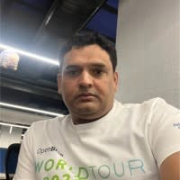

SAP HANA and MariaDB compete in the database management system category. SAP HANA appears to have the upper hand due to its advanced features and real-time processing capabilities, especially appealing to large enterprises.
Features: SAP HANA stands out with impressive real-time processing, in-memory technology reducing storage needs, and high-speed analytics. It is known for stable performance and excellent support for real-time analytics and supplier relationship management. Its data compression, high performance, and audit trails make it ideal for large enterprises. Meanwhile, MariaDB is appreciated for being open-source and user-friendly, offering efficient data handling, robust performance, and replication at a lower cost.
Room for Improvement: SAP HANA faces critiques over its high cost, complexity, and needing better integration and customization. Users desire enhancements in technical support, ease of use, scalability, and memory management. There is also a call for more flexibility in licensing. MariaDB, while cost-effective, lacks some enterprise-grade features and requires improvements in clustering, redundancy, backup management, scalability, and stability. Users also suggest better documentation and system integration.
Ease of Deployment and Customer Service: Both SAP HANA and MariaDB offer diverse deployment options including on-premises and cloud environments. SAP HANA is often seen as complex during deployment but benefits from strong technical support, though with some reports of slow responses. MariaDB is praised for ease of use and straightforward setup, bolstered by strong community support, although challenges with technical support are noted compared to proprietary solutions.
Pricing and ROI: SAP HANA is recognized for offering substantial value with robust features and fast processing, especially in large enterprises, but is considered expensive with a high total cost of ownership. Its licensing is viewed as an investment with potential significant returns in complex environments. MariaDB’s open-source nature offers a cost advantage with no licensing fees, making it attractive for budget-constrained businesses while providing solid functionality and ROI.
We do not feel we're getting value for the investment due to the additional resources needed for integration and maintenance.
SAP HANA is a cost-saving solution that helps save money and serves as a time-saving solution that helps save time.
Compared to MongoDB, there are some platform deficiencies, but the support team shouldn't bear that burden.
The community support is better than the official SAP support.
While issues are resolved eventually, the first level of support is not as good as we would like.
When we raise a ticket for AWS or Azure issues, we find their support is very proactive, while SAP's support is quite passive.
Our operations have grown from a hundred data operations a day to as many in a couple of seconds.
There is enough scalability offered by SAP to meet our deployment needs.
The scalability rating is based on the ability to expand.
We haven't found issues with the stability of MariaDB.
We recently faced customer data loss during the cluster handover or failover fallback.
We have not had any problems in the last seven to eight years.
Regarding stability, they are using legacy systems and have implemented SAP HANA.
MariaDB is scalable and easy to scale.
The main issue is the ecosystem, which lacks the widespread support that SQL enjoys.
The setup process and deployment process for SAP HANA is complex.
Licensing costs with SAP HANA are very high.
MariaDB is in the pricey range, especially for huge databases handling terabytes of data.
It's a recurring subscription model, which is expensive compared to legacy systems with just a maintenance fee.
SAP is not a cheap company, and its licenses are expensive.
I would rate the price for SAP HANA as high.
Configuration, setup, and schema design are good features in MariaDB.
This architecture allows for faster data processing and real-time analytics that were not possible with traditional databases.
The concept enhances speed, allowing the database to serve and move data quickly.
One of our dashboards using Excelsius was previously developed on normal BW on Oracle data, which took 10 minutes to open. After developing the same calculation views using those tables and replacing them with calculation views in Excelsius, the dashboard opened in seconds.
| Product | Market Share (%) |
|---|---|
| SAP HANA | 9.6% |
| MariaDB | 5.7% |
| Other | 84.7% |


| Company Size | Count |
|---|---|
| Small Business | 27 |
| Midsize Enterprise | 12 |
| Large Enterprise | 25 |
| Company Size | Count |
|---|---|
| Small Business | 26 |
| Midsize Enterprise | 11 |
| Large Enterprise | 61 |
MariaDB is an open source relational database created by the original founders of MySQL. It is considered one of the most popular and trusted database servers throughout the world. MariaDB is a valued component found in most cloud offerings and is the default in many Linux tools. It is also widely used by Wikipedia, WordPress, and Google, among other well-known sites. Maria DB easily melds data into concise information from a vast array of applications, such as banking, online shopping, websites, and more.
MariaDB was originally created to improve MySQL performance. It is the most widely chosen database server due to the solution being super fast, robust, user-friendly, and easily scalable. MariaDB also offers a substantial ecosystem of plugins, storage engines, and numerous other valuable tools that make it very attractive for a significant offering of use cases.
The solution’s newest functionalities include compatibility with Oracle Database and Temporal Data Tables, and advanced clustering with Galera Cluster 4, which make it easier for users to research data history from any point in the past. Additionally, the most recent versions include JSON and GIS features. MariaDB is committed to staying an open source solution.
MariaDB Features
Reviews from Real Users
Faustine C., Engineering Supervisor- Corporate Data Solutions and Services at TZ Telecoms Corporation, shares, “The software provides a lot of information on what is happening inside the database. For most performance parameters it is easy to know if something is not right in the configuration or optimization which helps engineers take remedial fine-tuning measures. For example, if the database is underperforming it is easy to know which performance parameter can be adjusted to handle the workload. It is difficult to troubleshoot database issues if many performance parameters can not be monitored or debugged which is the case with some database management systems. It provides great monitoring of data storage, processing, and performance stability which is really important for real-time data storage and processing. It's a user-friendly product.”
A PeerSpot user who is a Senior Engineer at a tech services company relates, “ The solution's high availability is its most valuable aspect. We have found the product to be stable and the initial setup is pretty simple. I'd rate the solution at a ten out of ten. I'm very happy with it overall. I would recommend the solution to others. It's easy to find details about the product online and to learn about it.”
SAP HANA, also known as SAP High-performance Analytics Appliance, is a multi-model database that stores data in its memory, allowing users to avoid disk storage. The product combines its robust database with services for creating applications. SAP HANA is faster than other database management systems (DBMS) because it stores data in column-based tables in main memory and brings online analytical processing (OLAP) and online transaction processing (OLTP) together.
The column-oriented in-memory database design allows users to run high-speed transactions alongside advanced analytics, all in a single system. This provides companies with the ability to process very large amounts of data with low latency and query data in an instant. By combining multiple data management capabilities, the solution simplifies IT, helps businesses with innovations, and facilitates digital transformation.
The solution is structured into five groups of capabilities, categorized as:
There are three more SAP products that work alongside SAP HANA and complete the experience for users together. SAP S/4HANA Cloud is a ready-to-run cloud enterprise resource planning (ERP). SAP BW/4HANA is a packaged data warehouse, based on SAP HANA, which allows users to consolidate data across the enterprise to get a consistent view of their data. Finally, SAP Cloud is a single database as a service (DBaaS) foundation for modern applications and analytics across all enterprise data. All three products can combine with SAP HANA to deliver to users an optimized experience regarding their data.
SAP HANA Features
Each architectural group of capabilities of SAP HANA has various features that users can benefit from. These include:
SAP HANA Benefits
SAP HANA provides many benefits for its users. These include:
Reviews from Real Users
According to a database consultant at a pharma/biotech company, SAP HANA is a very robust solution with good data access.
Bruno V., owner at LAVORO AUTOM INF E COM LTDA, likes SAP HANA because the product offers advanced features, helps reduce hours, and makes it easy to find what you need.
We monitor all Relational Databases Tools reviews to prevent fraudulent reviews and keep review quality high. We do not post reviews by company employees or direct competitors. We validate each review for authenticity via cross-reference with LinkedIn, and personal follow-up with the reviewer when necessary.